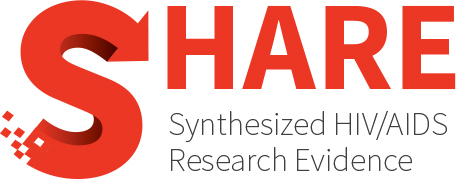Category Archives: Governance arrangements
How decisions about care are made
Late diagnosis of human immunodeficiency virus (HIV) and its associated factors in Asian countries: A systematic review
Background: Despite widespread public health interventions and research on Human Immunodeficiency Virus (HIV), late diagnosis and presentation into care constitute serious challenges to effective prevention and control of the disease. Asia,...
Effects of test-and-treat versus preexposure prophylaxis on elimination of HIV transmission: Analysis of 24 HIV prevention trials
INTRODUCTION: In 2023, 28.8 million (72%) of 39.9 million people with HIV (PWH) worldwide were on treatment with viral suppression, while 11.1 million (28%) people had viraemia with the risk...
Descriptions of risks and benefits of HIV vaccine trials in low-and middle-income countries (LMICs): An integrative review
Human immunodeficiency virus (HIV) vaccine trials are needed in efforts to prevent infection and acquired immunodeficiency syndrome (AIDS). Like other types of research, HIV vaccine trials present benefits and risks...
Analysis of the effect of the COVID-19 pandemic on syphilis in susceptible populations: Me who have sex with men, people living with HIV, and patients with gestational and congenital syphilis—A narrative review
The COVID-19 pandemic triggered a public health crisis that significantly impacted sexually transmitted infections (STIs), particularly syphilis. However, data on syphilis incidence during the pandemic remains inconsistent globally. Key groups...
The effectiveness of monetary incentives in improving viral suppression, treatment adherence, and retention in care among the general population of people living with HIV: A systematic review and meta-analysis
Background Achieving and maintaining viral suppression and optimal adherence to antiretroviral therapy are crucial for improving health outcomes in general population of people living with HIV. This study aimed to...
A meta-analysis of prevalence and moderating factors of malnutrition among people living with HIV across countries
Malnutrition is a critical issue for people living with HIV (PLWH), affecting their immune function, health outcomes, and response to antiretroviral therapy. This meta-analysis assessed the prevalence of malnutrition among...
Characterizing the HIV care continuum among children and adolescents with HIV in eastern and southern Africa in the era of “Universal Test and Treat”: A systematic review and meta-analysis
INTRODUCTION: The “Universal Test and Treat” (UTT) era for antiretroviral therapy (ART) increased HIV service delivery to children and adolescents aged 0-19 with HIV. The goal is to reach %95%...
Free antiretrovirals as a key tool against the HIV pandemic: A systematic review
BACKGROUND/OBJECTIVES: Access to antiretroviral (ARV) drugs remains a critical challenge in achieving the WHO/UNAIDS 95-95-95 targets, with medication costs representing a substantial barrier. This systematic review evaluates the effect of...
Harms associated with injecting in public spaces: A global systematic review and meta-analysis
BACKGROUND: Despite increasing backlash against harm reduction efforts and the need to understand the risk environments encountered by people who inject drugs (PWID), a quantitative systematic review on public injecting...
Machine learning for personalized risk assessment of HIV, syphilis, gonorrhoea and chlamydia: A systematic review and meta-analysis
Background Machine learning (ML) shows promise for sexually transmitted infection (STI) risk prediction, but systematic evidence of its effectiveness remains fragmented. Methods We systematically searched six electronic databases, three preprint...
